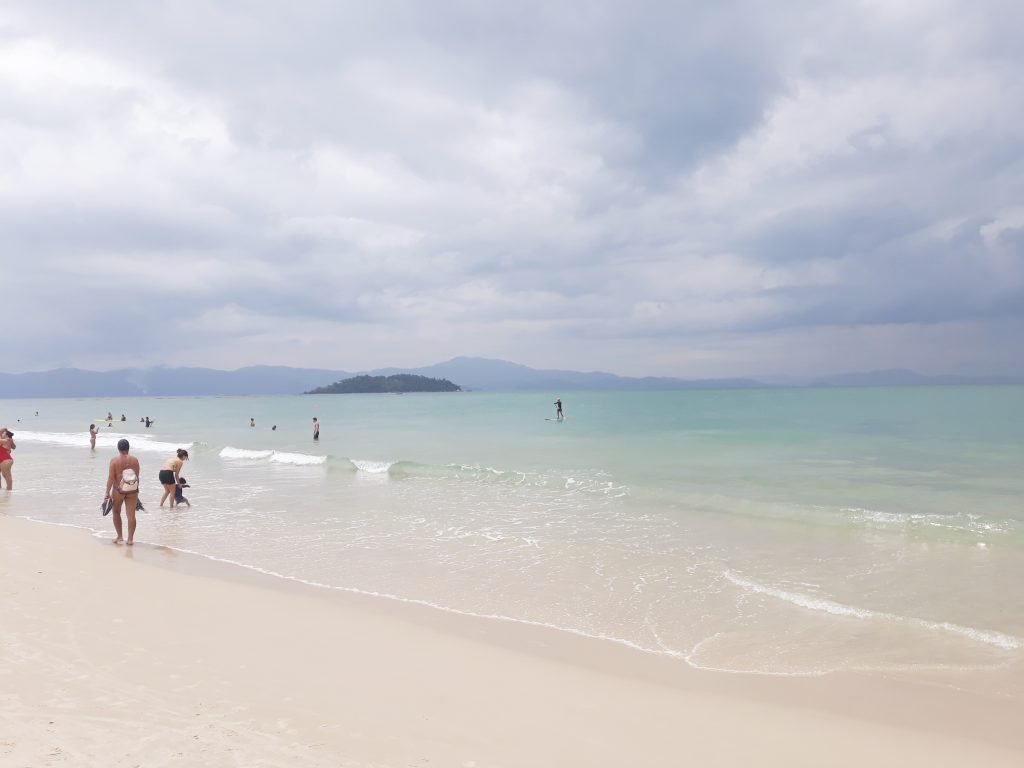Stop believing the lie that you have to choose between a world-class city that drains your bank account, or an affordable city that looks like a post-war scenario
What if I told you that you could have it all?
Low cost of living allied with incredible beauty, charm, and wellness.
Thanks to Portugal, a little country that managed the unlikely: cities more beautiful than Tuscany at prices cheaper than rural Kansas.
I’ve spent quite a time in Portugal; my wife even lived there, and I can tell you, beyond having what I consider the world’s second-best cuisine, it’s a country that is genuinely pleasant.
Today, I will reveal ten Portuguese cities that shatter the myth that you need deep pockets to live exceptionally well.
They offer that coveted European quality of life, without the typical European price tag.
But here’s one important point: as these spectacular locations start to hit international headlines, their affordable beauty might become expensive overnight.
So don’t wait until it costs a fortune – let’s get into it before the secret’s completely out.
Our journey begins in the north of the country…
Viana do Castelo

Viana do Castelo, on Portugal’s northern coast where the Lima River meets the Atlantic, offers a rare combination of Renaissance architecture and golden beaches. Founded in 1258, the city’s well-preserved center reflects its history in the Age of Discovery, with landmarks like the 16th-century Chafariz Fountain and buildings from the Manueline and Baroque periods.
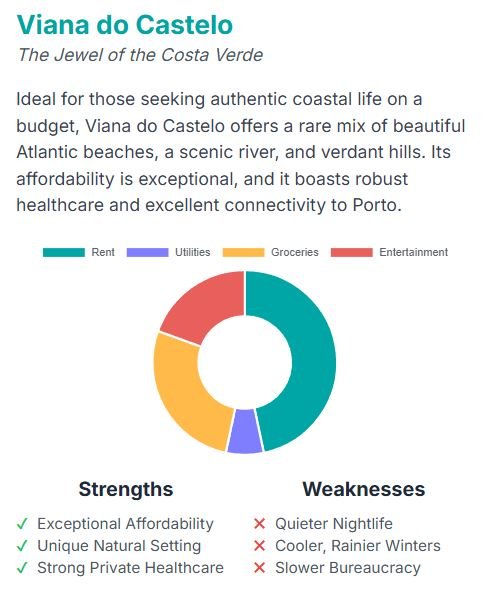
Despite its prime location, the city is very affordable. A couple can live comfortably on a budget of €1,200 to €1,700 per month, including rent. With property prices averaging just €1,152 per square meter, homeownership is a realistic goal for many. The lifestyle is relaxed, and water sports enthusiasts enjoy the shores of Praia do Cabedelo.
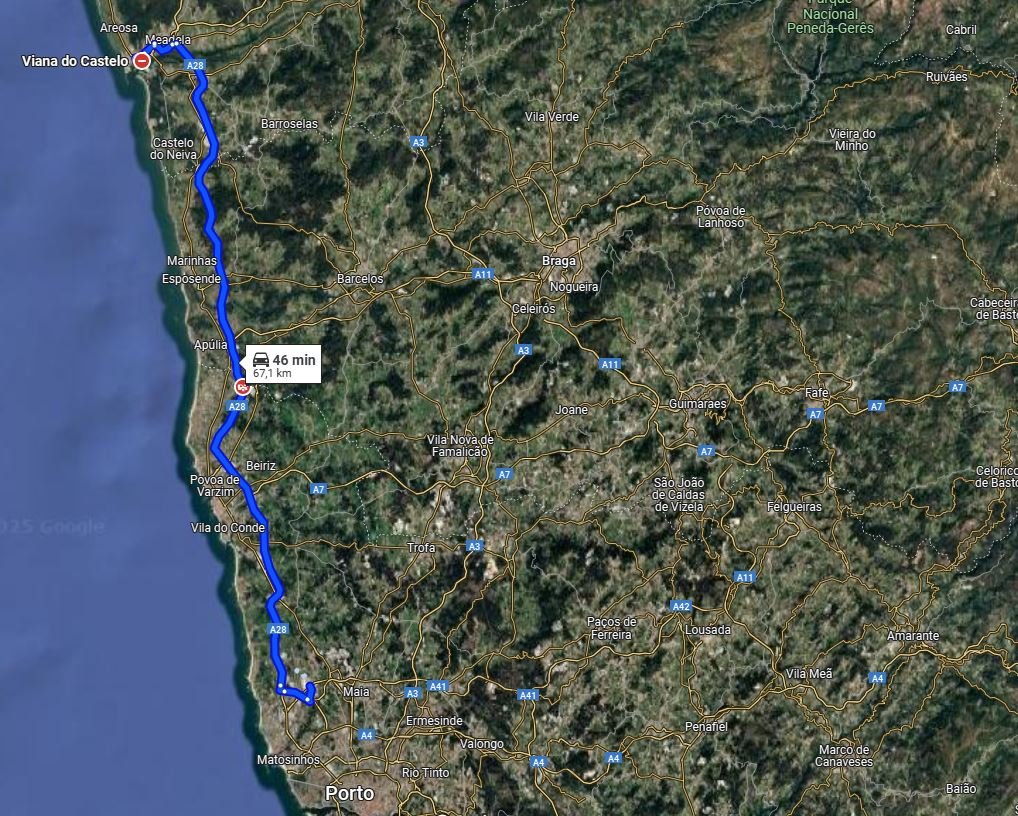
The city is well-connected. The A28 highway reaches Porto in about an hour, and the Porto Airport is only 45 minutes away. A local bus network serves the region, and trains connect to major cities throughout Portugal. For newcomers, the local Polytechnic Institute hosts integration events for its small but growing expat community.
Going a further south from Viana do Castelo, we arrive at…
Braga
The first and most important thing about this city – and you might not believe me – it is the fact that there, they serve one of the best bolinho de bacalhau that I tasted in my entire life.

It is at this place, and you REALLY should try it – it is spectacular.
Now, beyond the bolinho de bacalhau, Braga has other qualities.
Like the excessive number of Brazilians – Haha, no, just kidding.
This city is Portugal’s third-largest city, known as both the “Rome of Portugal” for its religious importance and the “Portuguese Silicon Valley” for its thriving tech scene. It is home to the country’s oldest cathedral and the famous Bom Jesus do Monte sanctuary. Today, the historic center is a place where ancient guilds once worked and modern tech startups now operate.
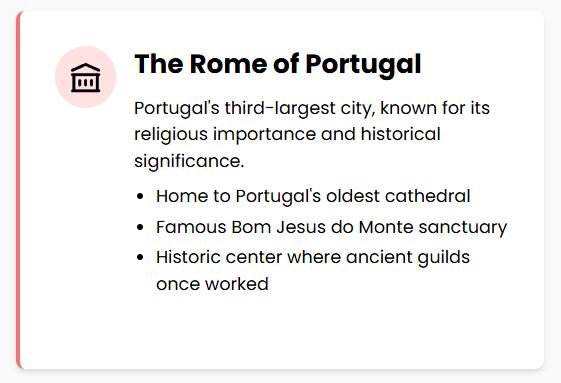
The University of Minho fills the city with a youthful, collaborative spirit, and its students and professors are a common sight in the city’s parks and plazas. Drawn by this energy and a lower cost of living, a couple can live comfortably here on €1,500 to €2,000 monthly. The city is a hub for academics, retirees, and tech professionals.

Braga is a practical choice for remote workers, offering excellent fiber internet with speeds over 140 Mbps and 10 Gbps service available. For transport, train connections reach Porto in as little as 36 minutes, giving residents easy access to an international airport without big-city housing costs.
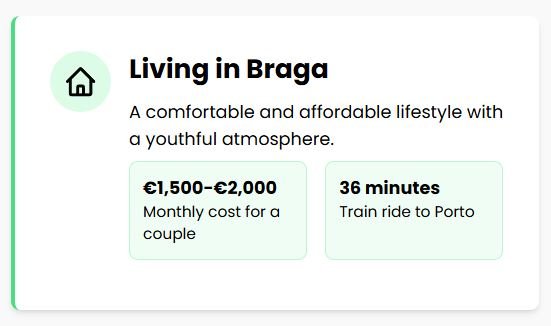
To the south of Braga, just 26 kilometers, you will find the next city from our list. Which is the cradle of Portugal – like Philadelphia is for the USA, but differently to Philly, this city has gothic architecture instead of Fentanyl addicts.
Guimarães
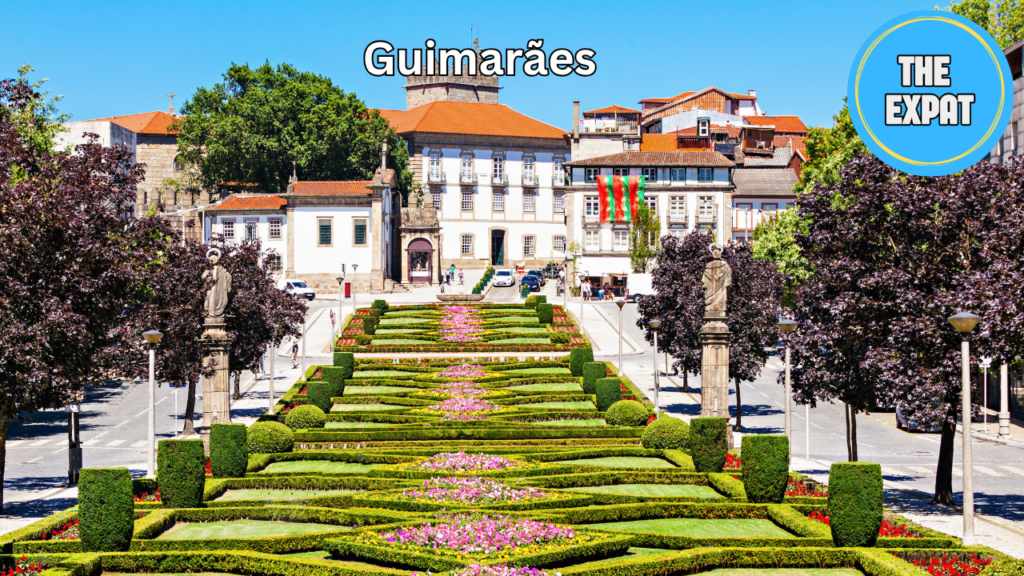
Known as the “Cradle of the Nation,” Guimarães was Portugal’s first capital. The nation’s first king, Afonso Henriques, was born here, and the 10th-century castle that dominates the skyline stands as a powerful symbol of the country’s origins. The medieval old town features beautiful plazas and architecture from the 15th to 19th centuries.
Even with its deep history, Guimarães maintains the intimate feel of a close-knit community, attracting retirees and digital nomads who want tranquility without isolation. A couple can live comfortably on €1,030 to €1,440 per month. One-bedroom apartments in the city center typically rent for just €350 to €500.
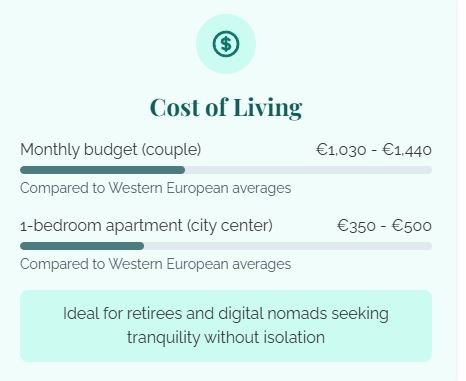
The city offers reliable public healthcare through the SNS system, and the private Hospital da Luz provides care with English-speaking staff. Guimarães is well-connected to Porto, with bus journeys taking 35-50 minutes and trains running in about 54 minutes, providing a crucial link to big-city amenities.
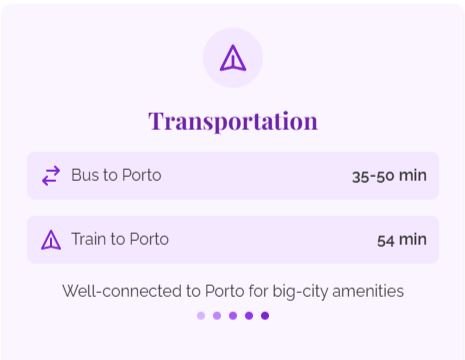
Before going to the next city, I have some great news. FREE FOR A LIMITED TIME: Grab your Expat Wealth & Lifestyle Compass ($108 value) today! Includes our 74-page guide of Affordable European Cities, our Zero-Tax countries report, and our expat checklist. https://bit.ly/ExpatWealthLifestyleCompass Join us here before this offer ends.
Viseu
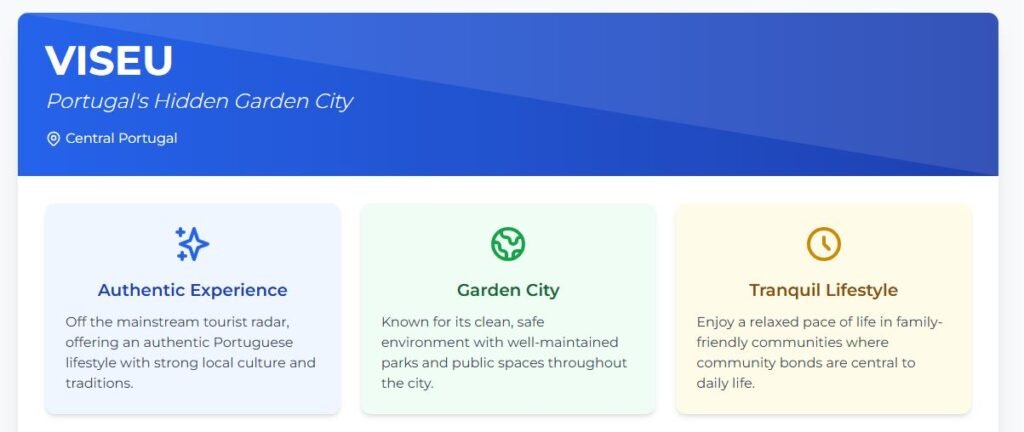
Viseu, known as the ‘Garden City,’ is a clean, safe, and well-organized city in the heart of Portugal that remains off the mainstream tourist radar. This allows it to offer an authentic Portuguese lifestyle, where family-friendly communities thrive and local culture is strong. The city’s well-maintained parks and public spaces reflect its reputation as one of Portugal’s most desirable places to live.

The cost of living is very reasonable, with a couple’s monthly budget estimated at €1,140 to €1,610. The pace of life is tranquil, and the city is shielded from the overpriced restaurants and tourist traps common in coastal areas. It’s a city where community bonds are still central to daily life. Many locals take pride in their vibrant neighborhoods, where markets and small shops thrive, fostering a sense of belonging. This unique blend of affordability and community spirit has earned the city a reputation as one of the best small cities in Europe, attracting those looking for a peaceful yet enriching lifestyle. Additionally, cultural events and festivals throughout the year strengthen the bonds among residents and celebrate the city’s rich heritage.

While Viseu has no direct train line, regular bus services and the highway system connect it to Porto in under two hours. The city has excellent public healthcare and a top-tier private hospital, CUF Viseu, with specialized medical services that rival those in much larger cities.
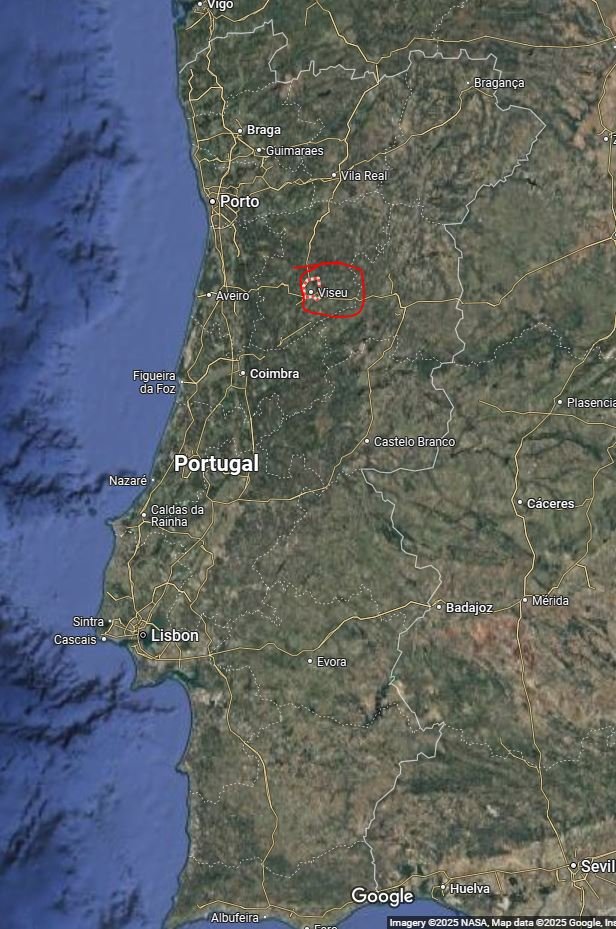
This is what a local told us about his city:
“ I’m from Viseu, and if you come here, please try Viriatos from Confeitaria Amaral. Also, if you’re into old and historic buildings go to Sé and the streets nearby. If you’re into nature and parks try for example Fontelo Park or Aquilino Ribeiro park. Have fun!”
From Viseu, we keep going south, to what is probably the most postcard-worthy city north of Lisbon.
Aveiro
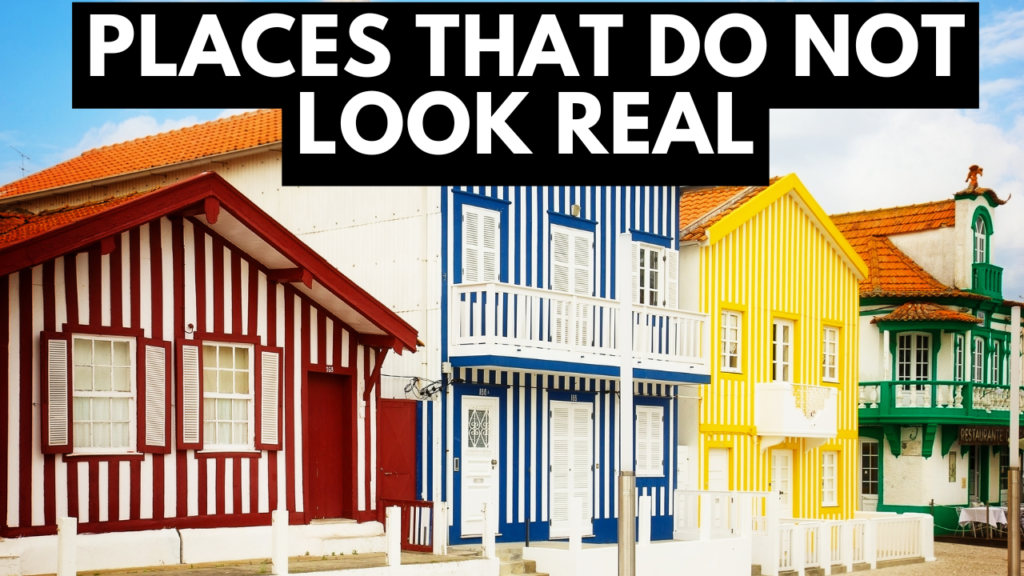
Aveiro is nicknamed the ‘Venice of Portugal’ for the network of canals that cross its city center. Colorful ‘moliceiro’ boats, once used for harvesting seaweed, now offer scenic tours past the city’s elegant Art Nouveau architecture. This unique setting offers canal-side living without the intense crowds or prices of its Italian counterpart.
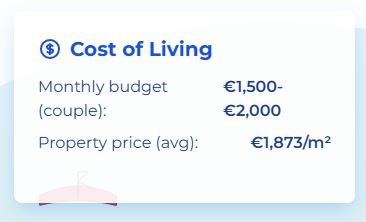
The University of Aveiro transforms the historic city into an international hub, generating a vibrant social scene that makes integration smooth for newcomers. This blend of coastal relaxation and urban energy can be enjoyed on a budget of €1,500 to €2,000 per month for a couple. Property in Aveiro averages €1,873 per square meter.

Aveiro’s strategic position on Portugal’s main transport corridor provides excellent connectivity. High-speed Alfa Pendular trains reach Porto in about an hour and the university city of Coimbra in just 30 minutes, giving residents access to major hubs without paying their housing costs.

From Aveiro, we keep going south – but we skip Lisbon.
You might ask why… Well, first of all, Lisbon is quite expensive. It is a beautiful city, but there are some issues. Even so, I still recommend you to visit it if you have time.

Évora
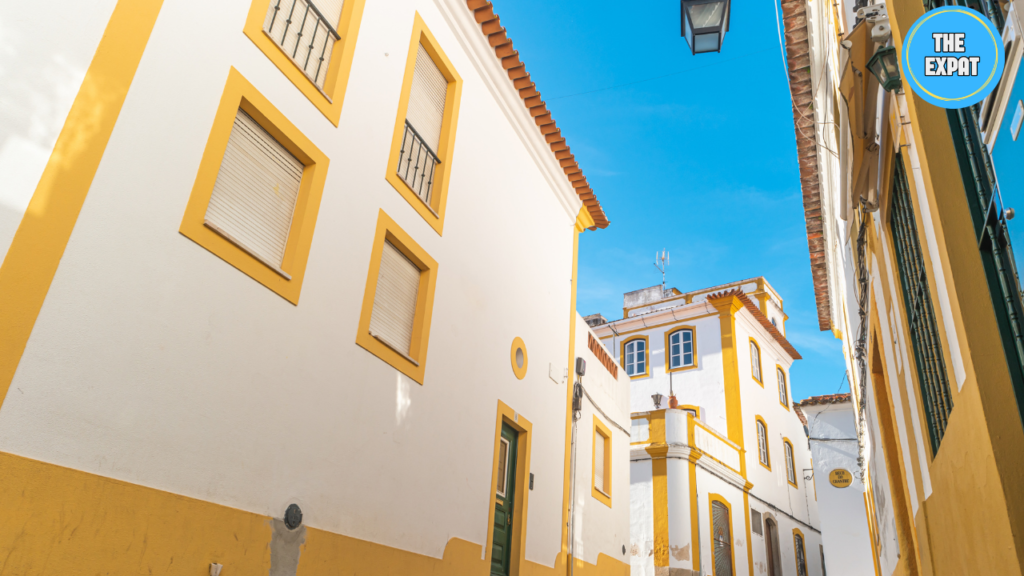
Évora is the capital of the Alentejo region and a UNESCO World Heritage site, functioning as a living museum enclosed within perfectly preserved medieval walls. The city showcases centuries of history, from its Roman Temple to the unique Chapel of Bones. During the 15th century, Portuguese kings favored Évora as their residence, leaving behind palaces and convents that cemented its importance.
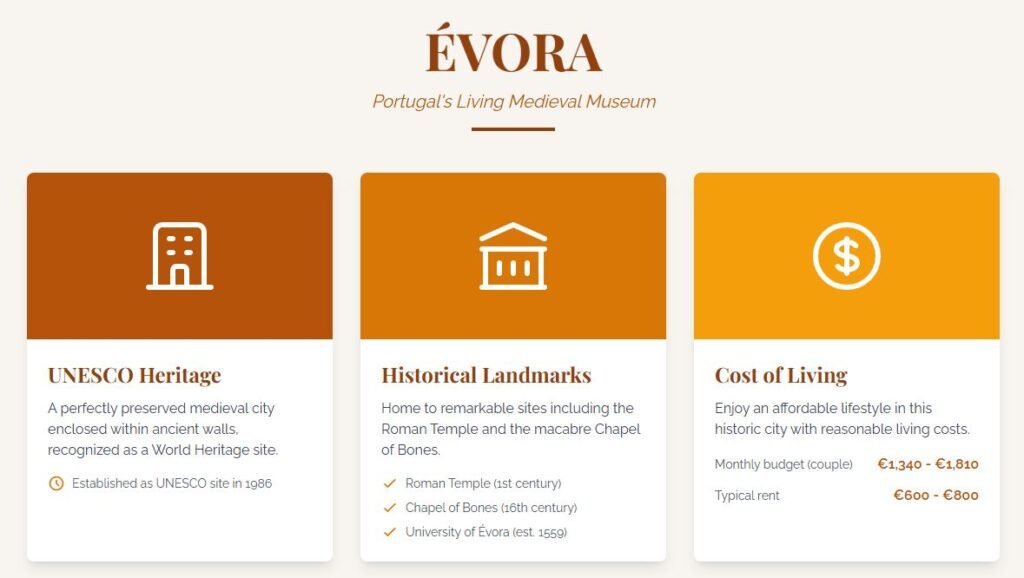
The Alentejo region is known for a slower pace of life that flows through the area’s cork forests and vineyards. This lifestyle, combined with the intellectual energy from the 16th-century University of Évora, creates a unique atmosphere. A couple can live comfortably on €1,340 to €1,810 monthly, with rents typically between €600 and €800.
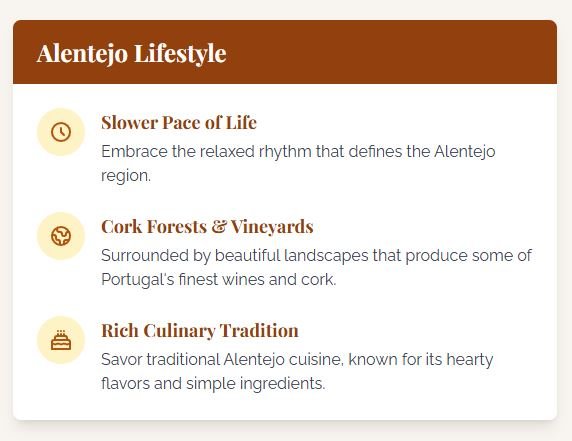
While located inland, Évora is not isolated. Regular train connections reach Lisbon in about 1 hour and 17 minutes, providing easy access to the coast and an international airport whenever needed. This allows for a life steeped in history with all the conveniences of a modern connection.
Tavira
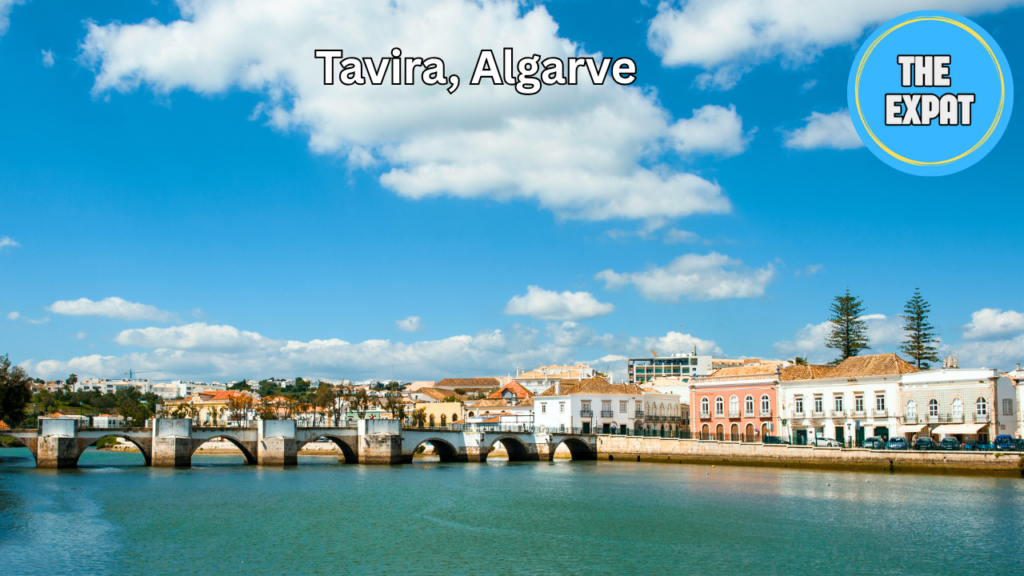
Tavira is arguably the most graceful town in the Algarve, located in the quieter eastern part of the region. It offers authentic tranquility with its cobbled streets, traditional whitewashed buildings, and 37 historic churches. The town’s distinctive pyramid-style roofs and architectural harmony reflect genuine Portuguese heritage rather than mass-tourism development.

The town is home to a diverse and well-established expat community of British, French, and German residents, which creates a welcoming atmosphere where English is widely spoken. Tavira offers excellent value, with a comfortable monthly budget for a couple around €2,000. Property prices average €3,276 per square meter, significantly lower than in the western Algarve.
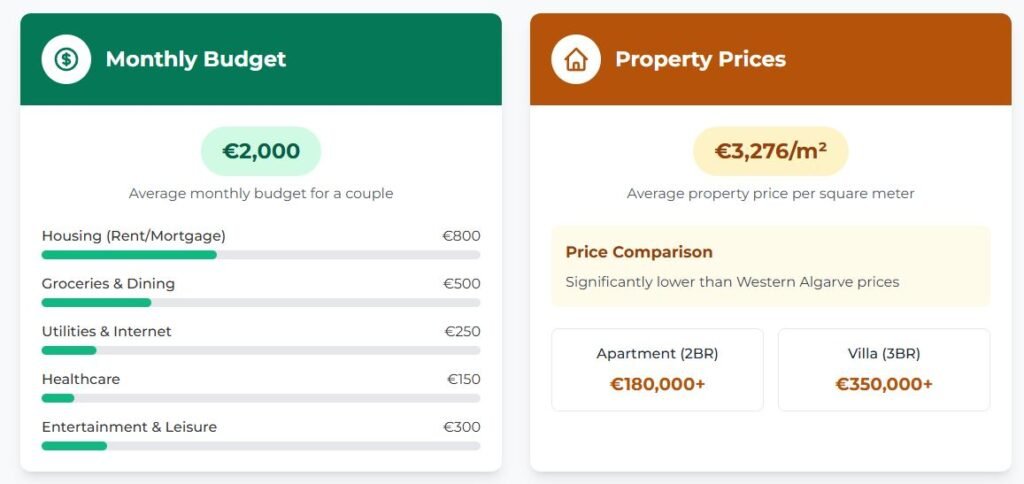
Tavira’s transportation links are very convenient. The main Algarve railway connects to other coastal towns and Lisbon, and the nearby A22 motorway makes car travel simple. Critically, Faro International Airport is just a 30-minute drive away, ensuring easy international connections.

We keep going south, and from Évora we arrive at…
Lagos
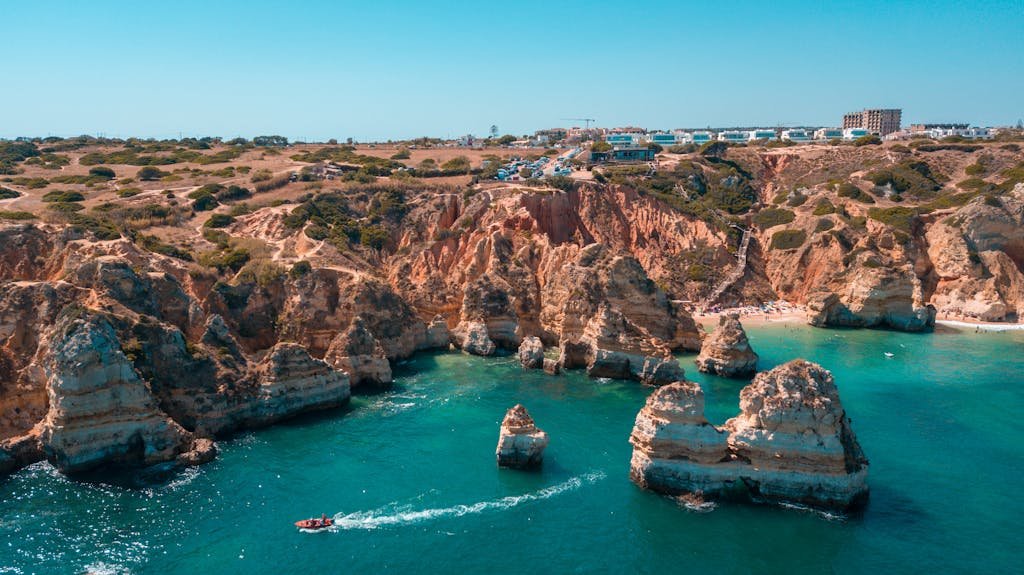
Lagos embodies a perfect fusion of maritime legacy and modern adventure on the Algarve coast. Historically, it was the launching point for Portugal’s Age of Discovery expeditions. Today, its modern marina is a hub for boat trips exploring the dramatic sandstone cliffs and world-renowned beaches like Praia Dona Ana.
This premium coastal lifestyle comes at a higher cost. A couple’s monthly budget is around €1,950 to €2,300, with one-bedroom city-center apartments averaging €950 to €1,050. The vibrant and diverse expat community, with many active social clubs centered on surfing and hiking, makes it easy for newcomers to connect.
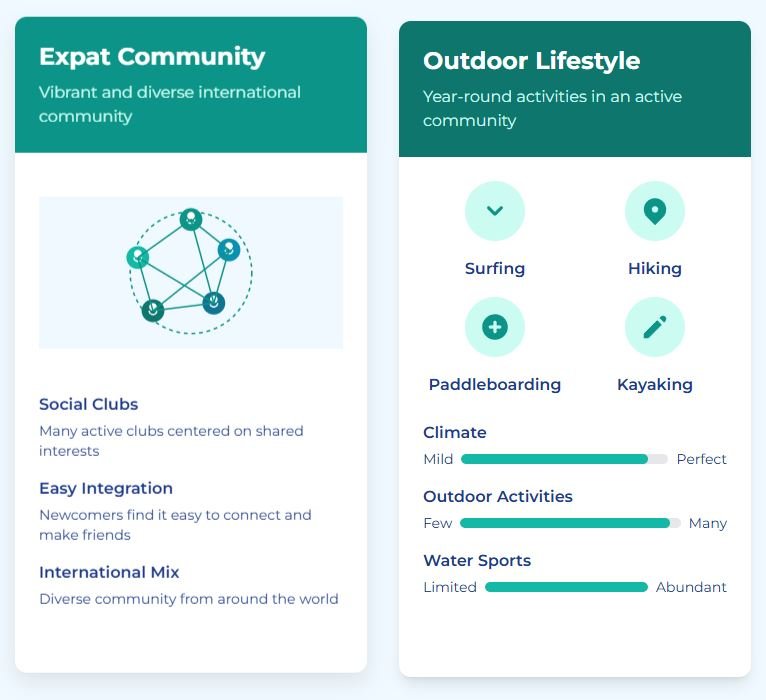
The town acknowledges its complex history, including having housed Europe’s first slave market, alongside its celebrated beauty. The lifestyle is defined by outdoor and water sports, from paddleboarding to kayaking, available year-round in this active community.
From the Algarve, we go to the medium of the Atlantic ocean, to an archipelago that reminds some of Hawaii – but without the NIMBYs.
Ponta Delgada
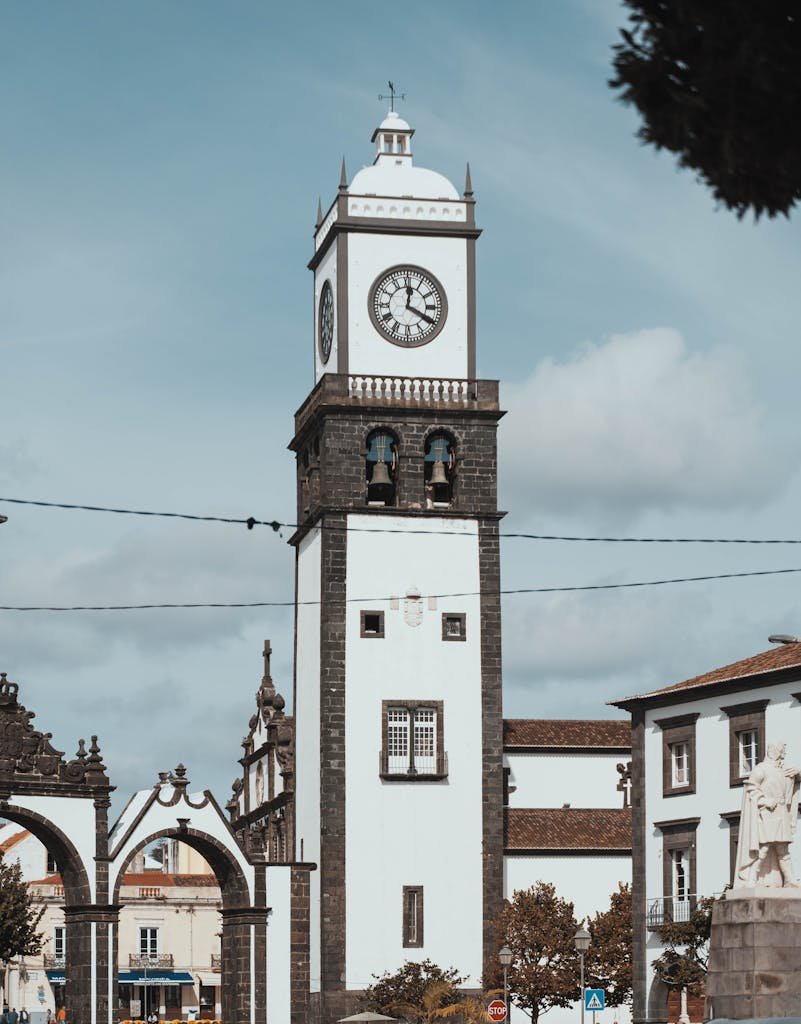
Ponta Delgada is the capital of the Azores, a Portuguese archipelago offering a unique island lifestyle in the Atlantic. The city grew from a fishing village into a key economic center, with a historic core of whitewashed buildings and baroque churches. It offers a slower, relaxed pace of life with a strong sense of community.
Surprisingly, island life here is more affordable than on the mainland. A couple can live comfortably on €1,500 to €1,900 per month, helped by a lower VAT rate (18% vs. 23%). While some imported goods cost more, daily expenses for housing and food are remarkably low.
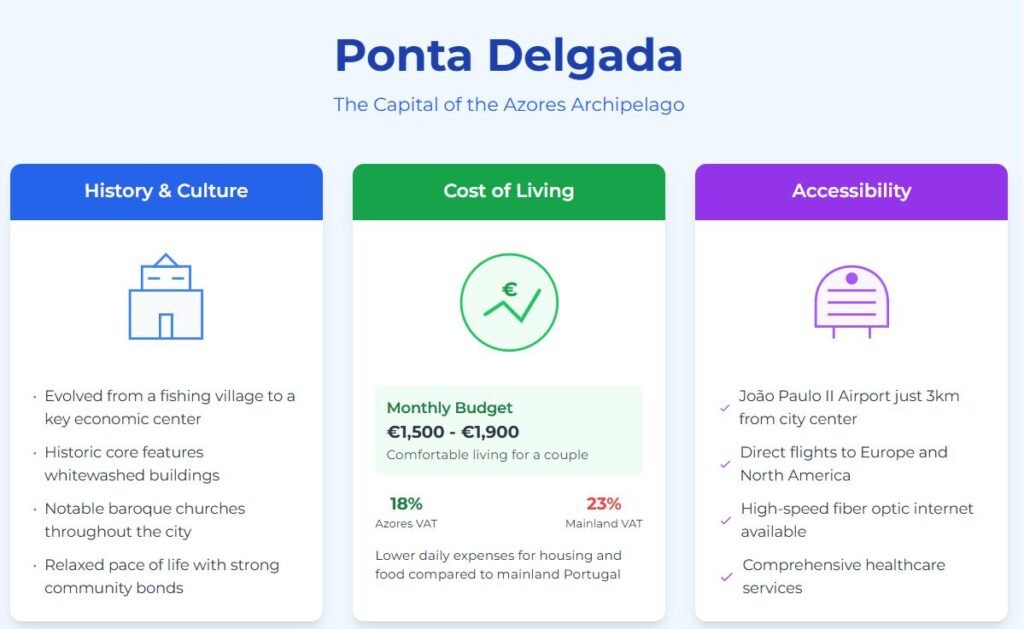
Despite its remote location, Ponta Delgada is highly accessible. João Paulo II Airport is just 3 kilometers from the city, with direct flights to Europe and North America. The city also has high-speed fiber optic internet for remote work and provides comprehensive public and private healthcare services.

Funchal
Funchal is the sophisticated capital of Madeira, an archipelago known for its mild, year-round climate and stunning natural beauty. The city blends historic European charm with relaxed island living, its cobblestone streets winding through lush botanical gardens that stay green all year. It’s a cosmopolitan hub that attracts visitors from around the world.
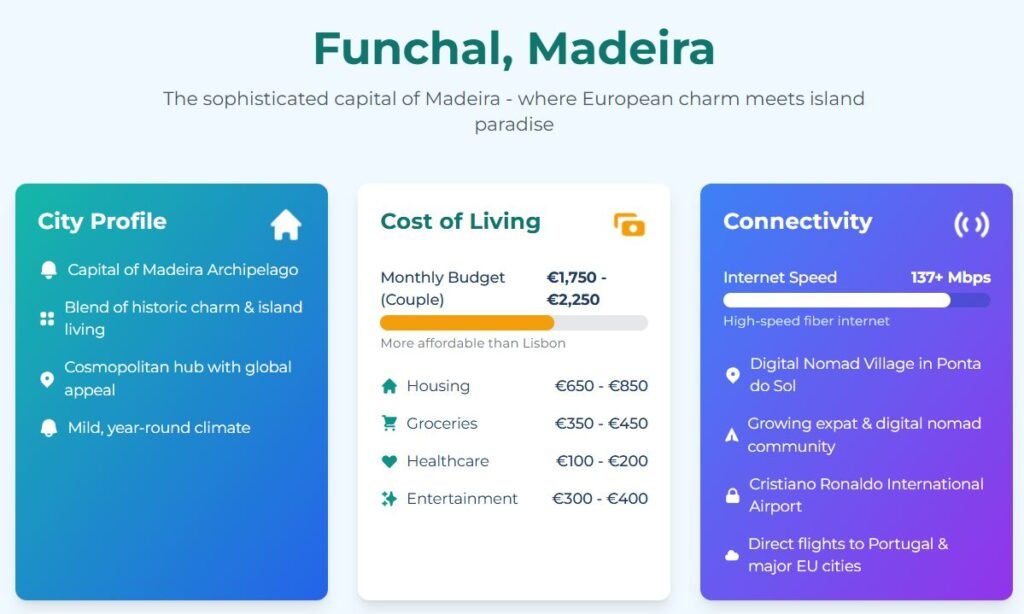
While a major tourism destination, Funchal remains surprisingly affordable for residents. A couple can live comfortably on a budget of €1,750 to €2,250 per month—cheaper than Lisbon. This attracts a large community of expats and digital nomads, supported by initiatives like the Digital Nomad Village in nearby Ponta do Sol.
Funchal is practical as well as beautiful. It has excellent high-speed fiber internet, with median download speeds over 137 Mbps. Cristiano Ronaldo International Airport provides direct flights to mainland Portugal and major European cities, making it easy to travel while enjoying the benefits of island life.
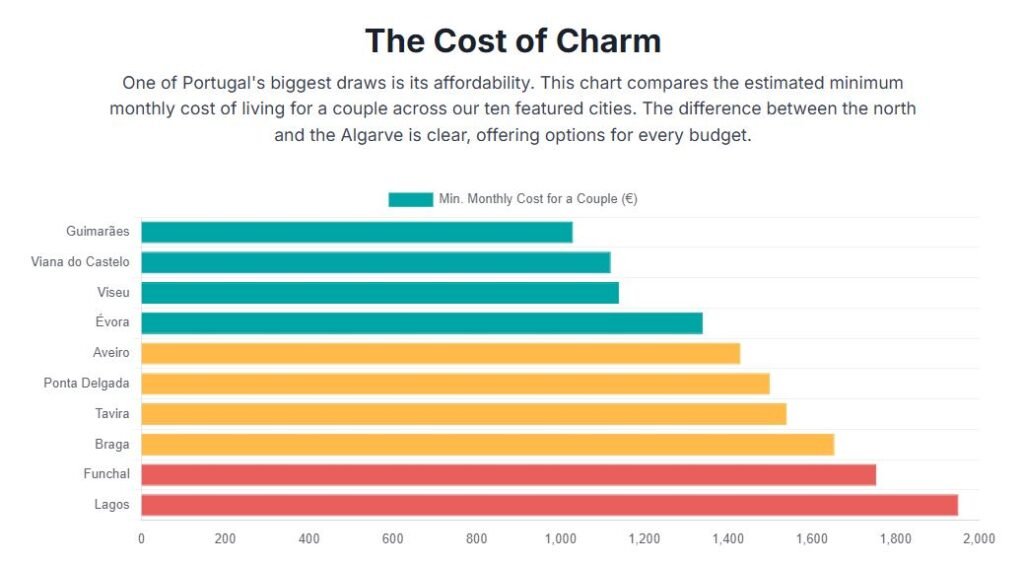
Now, there are other nice places in Portugal, and it pretty much depends on your personality.
That is why I selected the best places to retire in Portugal according to each personality type!
Levi Borba is the founder of expatriateconsultancy.com, creator of the channel The Expat, and best-selling author. You can find him on X here. Some of the links above might be affiliated links, meaning the author earns a small commission if you make a purchase.
